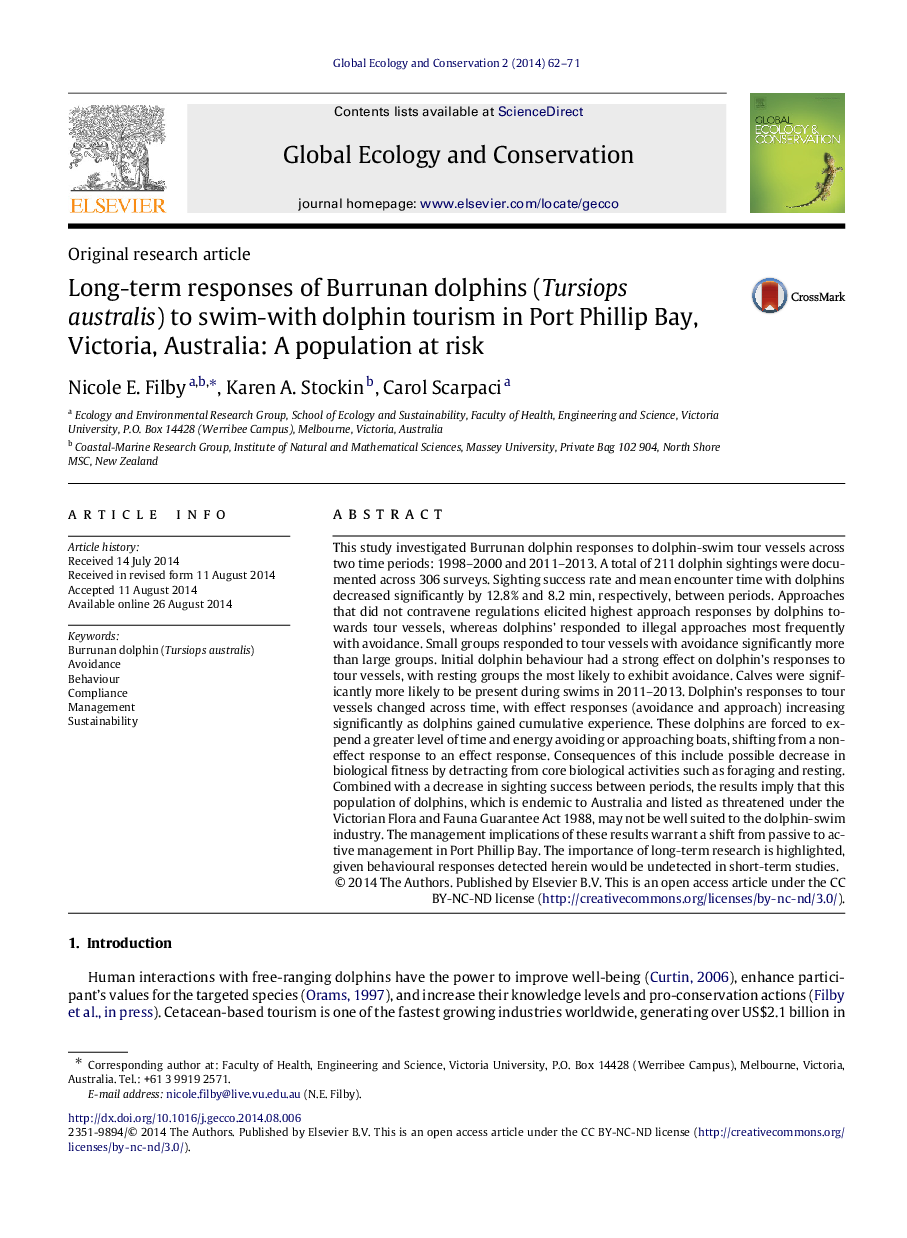| Article ID | Journal | Published Year | Pages | File Type |
|---|---|---|---|---|
| 4379669 | Global Ecology and Conservation | 2014 | 10 Pages |
This study investigated Burrunan dolphin responses to dolphin-swim tour vessels across two time periods: 1998–2000 and 2011–2013. A total of 211 dolphin sightings were documented across 306 surveys. Sighting success rate and mean encounter time with dolphins decreased significantly by 12.8% and 8.2 min, respectively, between periods. Approaches that did not contravene regulations elicited highest approach responses by dolphins towards tour vessels, whereas dolphins’ responded to illegal approaches most frequently with avoidance. Small groups responded to tour vessels with avoidance significantly more than large groups. Initial dolphin behaviour had a strong effect on dolphin’s responses to tour vessels, with resting groups the most likely to exhibit avoidance. Calves were significantly more likely to be present during swims in 2011–2013. Dolphin’s responses to tour vessels changed across time, with effect responses (avoidance and approach) increasing significantly as dolphins gained cumulative experience. These dolphins are forced to expend a greater level of time and energy avoiding or approaching boats, shifting from a non-effect response to an effect response. Consequences of this include possible decrease in biological fitness by detracting from core biological activities such as foraging and resting. Combined with a decrease in sighting success between periods, the results imply that this population of dolphins, which is endemic to Australia and listed as threatened under the Victorian Flora and Fauna Guarantee Act 1988, may not be well suited to the dolphin-swim industry. The management implications of these results warrant a shift from passive to active management in Port Phillip Bay. The importance of long-term research is highlighted, given behavioural responses detected herein would be undetected in short-term studies.
